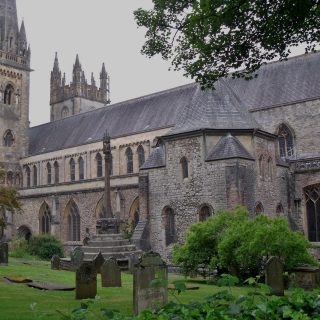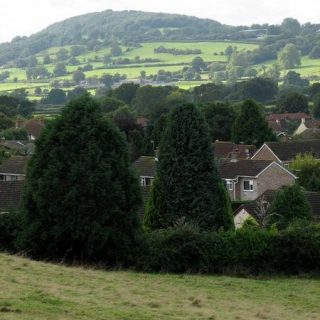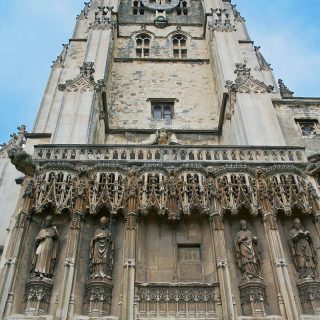Category: Early Christianity
The 12 century Cathedral of Llandaff was built on the site of an earlier church traditionally attributed to Saint Telio, the successor of Saint Dubricius who had established a 6th century community here at a ford over the River Taff. Telio was succeeded by Saint Oudoceus (also known as Euddogwy) (Died 700AD).
A two feet high pillow mound earthwork shaped as a cross in Banwell has a Devil legend attached to it. According to the story, the villagers of Banwell attempted to erect a large cross on Banwell Hill, but each night the Devil would come along and blow it down. In order to prevent this the villagers decided to create the cross on the ground making it difficult for the Devil to destroy.
The following article entitled ‘The Glory of Banwell Church’, edited by Jill Bailey, was originally published on 28 September 1963 and republished in the The Weston Mercury on 23 May 2008.
Robert Fitz-Henry, Lord of Lathom (Born 1135) founded the Augustinian Burscough Priory around 1190. It was dissolved during the Dissolution of the Monasteries by King Henry VIII circa 1536 and today very little remains of the building.
As far as I am aware Rochdale no longer celebrates the Rush Bearing festival, though nearby Littleborough revived theirs in 1991 and continue to celebrate it each year. Below is description of how Rochdale and its Rush-Bearing from Lancashire Legends (1873) by John Harland & T T Wilkinson.
The largest gothic cathedral in northern Europe, York Minster dates from between 1220 and 1472. It is built upon the site of York’s Roman Basilica and subsequently the location chosen for an early Christian Church (627AD – 640AD).
Founded by Roger Bigod, 1st Earl of Norfolk (died 1107), the 12th century ruined Priory of St Mary at Thetford has been the site of several reported sightings of what may have been black robed cluniac monks.
All Saints is considered to be York’s finest medieval church and has one of the best stained glass displays in Britain.
Anchorites and anchoresses would live in religious solitude bricked up in a hut or cell known as an anchorhold attached to the side of a medieval church. This was a special vocation and the bricking up of the chosen anchorite was usually presided over by the bishop.
The intriguing Saint Tanwg’s Church is situated in the sand dunes at Llandanwg, which is at the mouth of the River Artro, opposite to Mochras (Shell Island).











Recent Comments